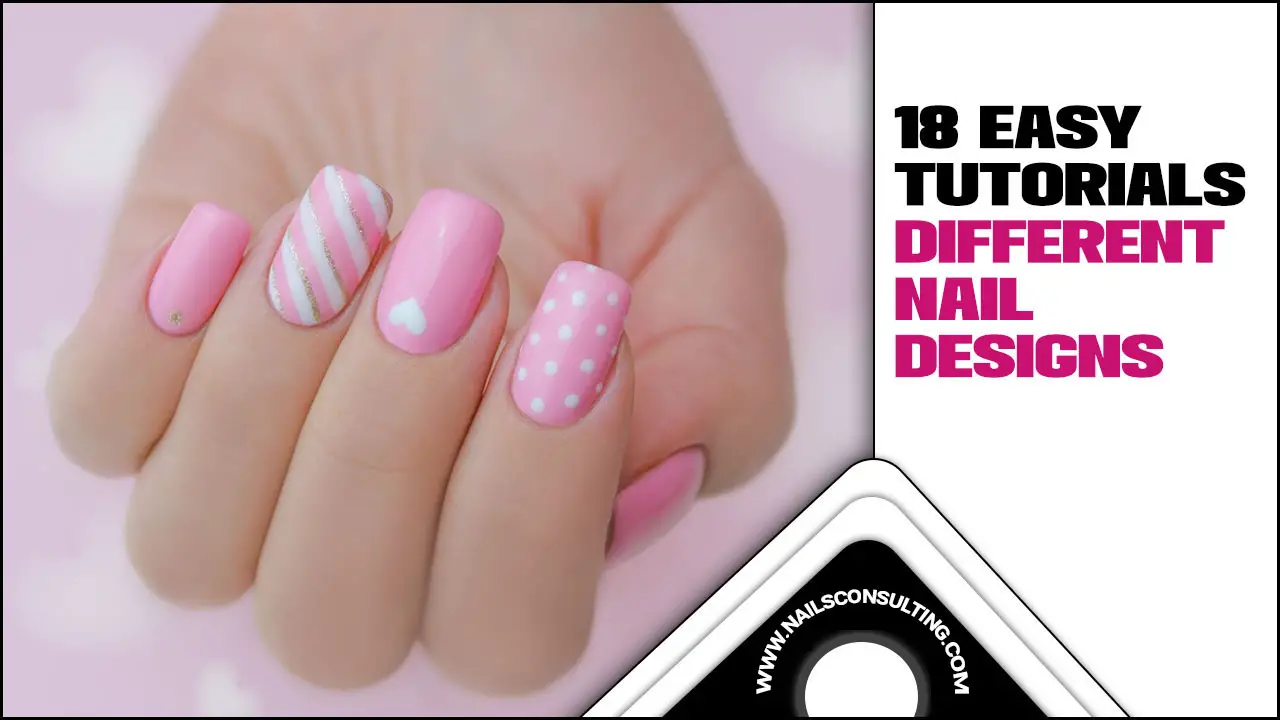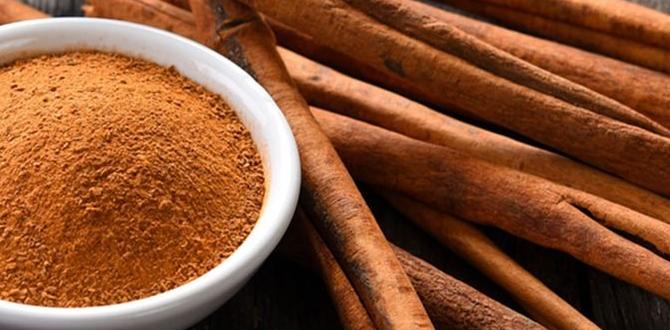Tulip nail designs are a blooming lovely way to add a touch of spring and elegance to your manicure. They range from simple painted tulips to intricate 3D floral art, perfect for beginners wanting to try floral patterns or seasoned nail artists seeking fresh inspiration. This guide covers essential ideas and tips to help you create beautiful tulip nails.
Spring is in the air, and what better way to celebrate than with a fresh, floral manicure? Tulip nail designs are incredibly popular and for good reason – they’re elegant, versatile, and bring a burst of natural beauty to your fingertips. Whether you’re a total beginner or looking to refresh your nail art skills, you’ve come to the right place! Sometimes, trying out new nail art can seem a bit daunting, especially with all the amazing designs out there. But don’t worry, we’re going to break down some super “blooming” easy and gorgeous tulip nail ideas. Get ready to transform your nails into a garden of delight!
The Blooming Basics: What You Need for Tulip Nails
Before we dive into creating designs, let’s gather our essential tools. Think of this as your nail art gardening kit! Having the right supplies makes the whole process smoother and more enjoyable.
Essential Tools for Tulip Nail Art:
Base Coat: This protects your natural nails and helps your polish last longer. It’s like prepping your canvas!
Top Coat: Seals your design and adds a beautiful shine. A good top coat is crucial for durability.
Nail Polish Colors: Of course, you’ll need your colors!
For the Tulip Petals: Pinks, reds, yellows, whites, oranges, purples – any color your heart desires!
For the Leaves/Stems: Greens (various shades work wonderfully).
For the Background: Consider soft pastels, nudes, or even a classic French tip.
Detail Brushes or Dotting Tools: These are your paintbrushes for nail art.
Fine-tip brushes: Perfect for drawing delicate stems and petal outlines.
Small detail brushes: Good for filling in colors and adding dimension.
Small dotting tool: Great for creating small dots or shaping petal edges.
Tweezers (Optional): Useful for placing delicate stickers or gems.
Nail Polish Remover and Cotton Pads: For cleaning up mistakes and prepping nails.
Clear Stickers or Stencils (Optional): For a super-easy stencil effect.
Understanding Your Polish Palette:
Choosing the right colors is half the fun!
For Classic Tulips: Think soft pinks, vibrant reds, classic whites, and sunny yellows.
For Unique Tulips: Explore fuchsia, coral, lavender, or even deep burgundy.
For a Modern Twist: Try gradient tulip petals, ombre backgrounds, or metallic accents.
Easy Peasy Tulip Nail Designs for Beginners
Let’s start with designs that are simple to execute but still deliver a big impact. These are perfect for your first foray into floral nail art.
1. The Simple Painted Tulip
This is the foundation of many tulip designs. It’s all about capturing the iconic shape.
How to Create a Simple Painted Tulip:
1. Prep Your Nails: Start with a clean, dry nail. Apply your favorite base coat and let it dry completely.
2. Apply Background Color (Optional): Paint your nails with your chosen background color (e.g., a soft nude or pastel). Let it dry fully.
3. Paint the Tulip Shape:
Using a fine-tip detail brush and your petal color (e.g., pink), paint a rounded, slightly V-shaped top. Imagine two curved lines meeting at a point, or two small, plump curves side-by-side. This forms the open bloom.
For a closed bud, paint a narrower oval with a slight point at the top.
4. Add the Stem: With a thin brush and green polish, carefully draw a thin line downwards from the bottom of your petal shape.
5. Add Leaves: From the stem, add one or two simple, elongated leaf shapes using green polish. They can be curved or straight.
6. Outline (Optional): For extra definition, you can lightly outline the petals and leaves with a darker shade of your petal color or a contrasting color like black or dark brown.
7. Top Coat: Once everything is completely dry, apply a generous layer of top coat to seal and protect your beautiful artwork.
2. The Polka Dot Tulip Accent
This design adds a playful touch to the simple painted tulip.
How to Create a Polka Dot Tulip Accent:
1. Follow Steps 1-4 from the “Simple Painted Tulip” design.
2. Add Polka Dots: While the petal color is still slightly wet (or after it’s dry, using a dotting tool), use a contrasting polish color (like white or a darker pink) to add small dots on top of the tulip petals. You can place them randomly or in a pattern.
3. Add Leaves: Paint the green stems and leaves as usual.
4. Top Coat: Apply your top coat once everything is dry.
3. The French Tip Tulip Bloom
A chic and subtle way to incorporate tulips.
How to Create a French Tip Tulip Bloom:
1. Prep and Base Color: Apply your base coat and a sheer or light pink polish to the entire nail for a clean, natural look.
2. Paint the French Tip: Using a fine brush and a white or pastel color, create a classic French tip.
3. Add Tiny Tulips: On the white tip, or just below it on the nail bed, use a very small detail brush and a bright color (like red or fuchsia) to paint tiny, simplified tulip shapes. Think of them as miniature versions of the simple painted tulip at the top, or even just a few petal-like curves.
4. Optional Greenery: You can add a tiny green dot or a minuscule stem if you feel it complements the design without making it too busy.
5. Top Coat: Seal with a top coat.
4. The Gradient Tulip Canvas
This design uses a watercolor-like effect for a softer, more artistic feel.
How to Create a Gradient Tulip Canvas:
1. Apply Base Colors: Paint your nail with two soft, complementary colors in a gradient from cuticle to tip (e.g., pale pink blending into a soft peach). You can use a makeup sponge for a smoother blend or a brush for a more streaky effect. Let it dry.
2. Paint Outline Shapes: Using a fine detail brush and a darker shade of one of your gradient colors (or a contrasting color like purple if you used pink/peach), paint the basic outline of tulip petals on top of the gradient. Don’t fill them in yet.
3. Fill with Lighter Shades: Using lighter shades of the colors within your gradient or complementary pastels, fill in the outlined petal shapes. You can go over the lines a bit to blend them into the background.
4. Add Greenery: Paint thin green stems and leaves.
5. Top Coat: Finish with a top coat.
Level Up Your Tulip Game: Intermediate Designs
Ready to try something a little more involved? These designs offer more detail and can make your nails truly stand out.
5. The 3D Tulip Accent Nail
This involves using acrylic or gel to create raised, realistic-looking tulips. This is where the true “pop” comes in!
What You’ll Need for 3D Tulips:
Acrylic powder and monomer (liquid) OR Gel sculpting gel and UV/LED lamp.
3D sculpting brushes or gel brushes.
Your chosen colors for petals and leaves.
Cleansing solution/alcohol for brush cleaning.
Basic Steps for 3D Tulips (Acrylic Example):
1.
Create a Bead: Dip your brush into the monomer, then into the acrylic powder to create a bead of material.
2. Shape the Petals: Place the bead onto a non-porous surface (like a palette or a practice tip) or directly onto the nail where you want the tulip. Use your brush to gently press and shape the bead into petal forms. You can create several small petal shapes and arrange them to form a bloom, or sculpt a single petal shape.
3. Add Greenery: Sculpt small green shapes for stems and leaves, attaching them to the base of your petals.
4. Cure/Dry: Allow the acrylic to air dry completely. If using gel, cure under a UV/LED lamp according to the product instructions.
5. Refine and Seal: Once dry/cured, you can gently file to refine shapes if needed. Then, apply a gel top coat over the entire nail, including the 3D elements, to seal and add shine.
6. The Ombre Tulip Garden
Combining the popular ombre trend with floral art.
How to Create an Ombre Tulip Garden:
1.
Create the Ombre Base:
Apply a base coat.
Using a makeup sponge, dab two complementary colors onto the sponge to create an ombre effect on your nail. Blend carefully to get a smooth transition. You might need a couple of layers. Let dry.
2. Paint Tulips: On top of the dried ombre background, use a fine detail brush and a contrasting color (e.g., white or black) to paint your tulip designs. Consider placing them strategically, maybe clustered on one side or scattered across the nail.
3. Add Details: Add green stems and leaves. You can also use a dotting tool to add tiny dots of color or shimmer to the tulip petals for added interest.
4. Top Coat: Seal with a top coat.
7. The Minimalist Line Art Tulip
For a chic, modern, and understated look.
How to Create Minimalist Line Art Tulips:
1.
Prep and Base: Apply base coat and your chosen solid color (e.g., a light grey, beige, or even a clear polish).
2. Draw the Outline: Using a super-fine detail brush (sometimes called a “liner brush”) and a contrasting color (black, white, or metallic gold/silver), draw simple, stylized outlines of tulip blooms. Think of abstract, curved shapes that suggest petals. You can also draw simple stems and leaves. The beauty is in the simplicity and clean lines, not perfect realism.
3. Consider Placement: You can have one or two accent nails with art, or a subtle design on each nail.
4. Top Coat: Apply a clear top coat to protect the delicate lines.
8. The Stenciled Tulip Effect
A fast and easy way to get intricate-looking designs.
How to Create a Stenciled Tulip Effect:
1.
Apply Base: Apply base coat and your desired background polish.
2. Apply Stencil: Carefully place a small tulip-shaped stencil or a sticker onto your dried background color. For stickers, ensure the edges are pressed down firmly.
3. Paint Over: Using your petal color, gently paint over the stencil opening or the sticker design. For stencils, use a dabbing motion with a sponge or brush to avoid polish seeping underneath the edges.
4. Remove Stencil/Sticker: While the polish is still slightly wet (for stencils) or carefully after it dries (for stickers), remove the stencil or sticker to reveal the tulip shape.
5. Add Greenery: Use a fine brush to add green stems and leaves.
6. Top Coat: Seal with a top coat.
Tulip Nail Design Inspiration by Color
The color you choose can completely change the mood of your tulip nail design.
Color Palette Ideas for Tulip Nails:
Classic Romance: Soft pinks, baby blues, and whites with a delicate French tip background.
Bold & Beautiful: Deep reds, fuchsia, burgundy, and black accents.
Sunny Delight: Bright yellows, oranges, and pops of green.
Pastel Dreams: Lavender, mint green, peach, and sky blue.
Monochromatic Chic: Shades of a single color, like various pinks and reds, for a sophisticated look.
Earthy Tones: Terracotta oranges, olive greens, and creamy beiges for a more grounded feel.
Tips for Flawless Tulip Nails
Even the simplest designs look better with these pro tips.
Clean Workspace: Keep your area tidy. Have polish remover and cotton swabs handy for quick clean-ups.
Steady Hand: Rest your wrists on a stable surface. You can even use props like rolled-up towels.
Thin Coats are Best: Applying multiple thin coats of polish is better than one thick coat, which can lead to smudging and slow drying times.
Practice Makes Perfect: Don’t be discouraged if your first attempt isn’t salon-perfect. The more you practice, the better your strokes will become.
Use Quality Tools: Invest in a decent set of detail brushes. They make a huge difference in precision.
Consider Nail Shape & Length:** Tulips can look beautiful on any nail shape! Almond or oval shapes often lend themselves well to the curves of a petal, but shorter, squarer nails can rock a bolder, more graphic tulip.
Frequently Asked Questions About Tulip Nail Designs
3D sculpting brushes or gel brushes.
Your chosen colors for petals and leaves.
Cleansing solution/alcohol for brush cleaning.
Q1: What is the easiest way to do tulip nail designs as a beginner?
A1: The simplest method is the “Simple Painted Tulip.” Use a fine detail brush to paint a rounded ‘U’ shape for the petals directly onto a dried base color, and then add a thin line for the stem and two leaf shapes. Focus on the basic shape, and don’t worry about perfection!
Q2: Do I need special tools for tulip nail designs?
A2: While you can get creative with toothpicks or fine pens, dedicated nail art detail brushes (especially a fine liner brush and a small round brush) and dotting tools make the process much easier and give you more control. A good base and top coat are also essential for longevity.
Q3: How can I make my tulip nail designs look more realistic?
A3: For realism, consider using multiple shades for dimension. You can add darker shades to create shadows within the petals or a very thin outline in a contrasting color. For truly realistic tulips, 3D acrylic or gel sculpting is the way to go, as it adds actual depth.
Q4: What colors are best for tulip nail designs?
A4: Classic tulip colors include soft pinks, vibrant reds, sunny yellows, and whites. Green is standard for stems and leaves. However, don’t be afraid to experiment with unconventional colors like blues, purples, or even neons for a modern twist. The background color also plays a big role in the overall feel.
Q5: How long do painted tulip nail designs usually last?
A5: With a good base coat and a robust top coat, painted tulip nail designs can last anywhere from 5 to 10 days, depending on your daily activities and nail care habits. Avoid excessive use of hot water and harsh chemicals, which can shorten their lifespan.
Q6: Can I do tulip nail designs with nail stickers or stencils?
A6: Absolutely! Nail stickers and stencils are fantastic tools for beginners (and busy bees!). Apply your base color, carefully place the sticker or stencil, paint over or around it, and then remove to reveal your tulip shape. It’s a quick way to achieve precise designs.
Q7: How do I prevent my nail polish from smudging while I’m painting the details?
A7: Always ensure each layer of polish is completely dry, or at least mostly dry, before adding details. When painting fine lines or small shapes, use a light touch and avoid pressing too hard. It also helps to have a good quality, quick-drying top coat ready to seal everything in once you’re finished.
Conclusion: Let Your Nails Blossom!
There you have it – a bouquet of ideas to inspire your next tulip manicure! From the simplest strokes to more intricate creations, tulip nail designs offer a beautiful way to express your style and embrace the joy of the season. Remember, nail art is about creativity and having fun. Don’t be afraid to mix and match these ideas, experiment with colors, and most importantly, enjoy the process of making your nails bloom. So grab your polishes, your brushes, and let your inner artist take over. Happy painting!






